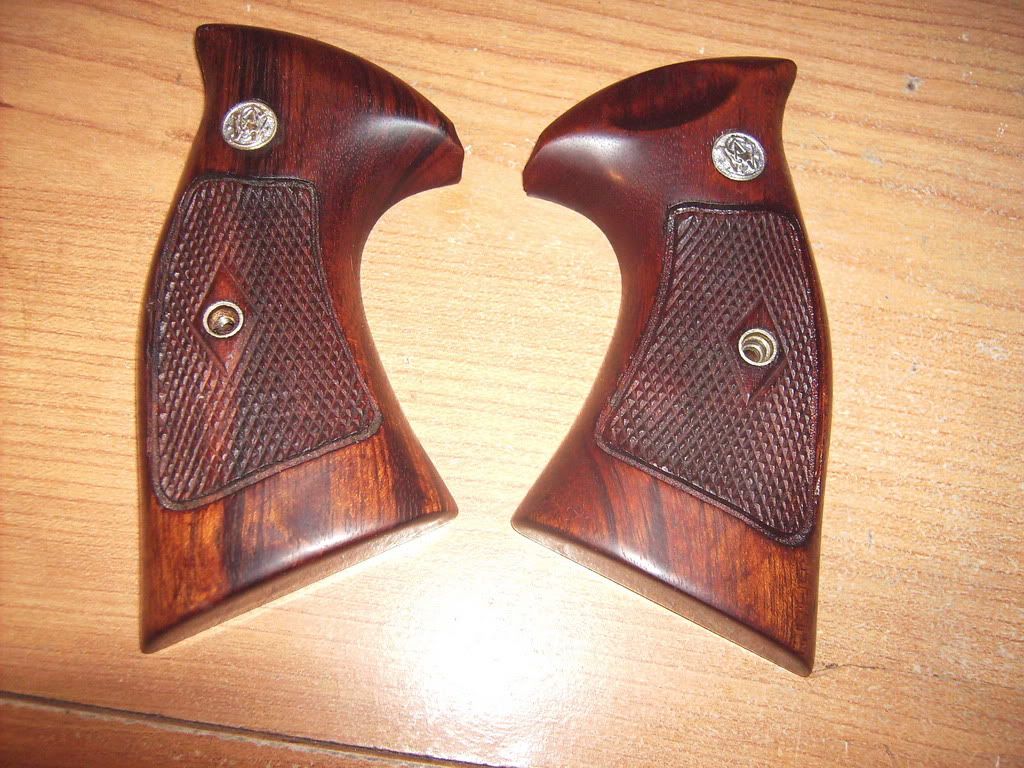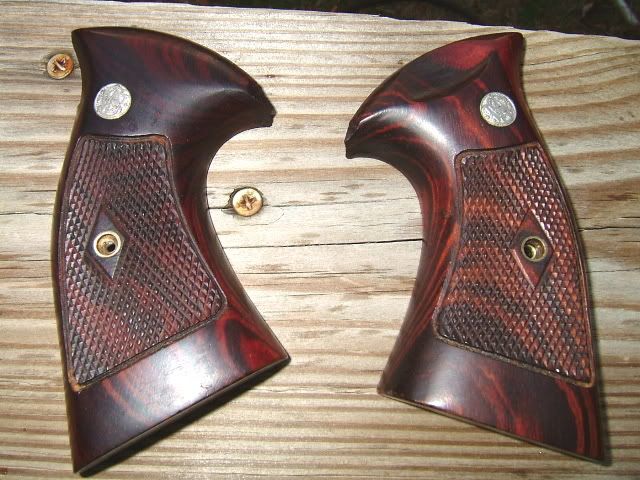
what do i have? 5 screw pinned resessed K228xxx inside of crane 4 over70120 over another4
Hello Shepra
That is a fine example you have there, and I hope I can answer your concerns as it is a Little complicated if you have not Dealt with, or studied these Changes but S&W used several different Identification Process's on their revolver's over the years, and I hope to explain them the best I can for you. From the Partial Serial number you have provided, It appears you have what they call a
Pre-18. Yours seems to be from around
1954. They started making the
Model 18 in 1948 and it was called The
Combat Masterpiece. The reason it was called that is because of it's
shorter 4" Barrel and Baughman quick draw sights. That is the Only difference between this model and the Famed
Model 17 which is called the
Target Masterpiece, due to it's
6" Barrel along with patridge front sight blade. The model 18 or Pre-18 is a rare find compared to the more Popular model 17's they did not make as many of them. In
1957 S&W was ordered by the Federal Government to Mark all their revolver's by using a model number stamped on the gun. This is why we see the model number's stamped into
the crane area after 1957 Yet the Previous Ones only have
stocking Numbers stamped in this Location which explains why Yours has the stocking Number or Bin Location numbers stamped there. They are of Little use other than letting a Factory employee know what Parts go where or what Bins they were Pulled from. All S&W Revolvers will Have the gun's correct serial numbers stamped into the bottom of the grip frame. In your case, the target grips shown on yours would have to be
Pulled to show this serial number. S&W also used to Stamp serial numbers in Various other Locations on the Older Vintage revolvers, Primarily to make certain all the Parts made for the specific revolver got back with it after their stages of finishing but as time Passed and all parts Became
Retro-Fit they stopped stamping the serial numbers in these Other Locations. The serial Number Locations used on Older Vintage revolvers used to be The
face of the Cylinder, The Extractor under Cut on the Bottom of the barrel where the flat Part is and even sometimes Under the star extractor of the cylinder. S&W also used to stamp Letter's on some of their Vintage revolver's to indicate
what finish was to be applied. This was done in the Under Cut of the Barrel extractor location, again on the flat Part, it was Not Uncommon to see the Letter
"B" on most all Pre-War revolver's there which meant a
Blue finish of the Letter
"N" there which meant
Nickel finish. The reason this was done was to
alert the Assemblers that if it was Nickel finish the Polishing Process was more
Intense and a finer Polishing had to be done to revolver's of the
Nickel finish compared to
blued. We Later saw this finish Stamp change from the "B" dropped and they used Mainly for the Letter "N" which indicated a Nickel finish and the later Production revolver spots we saw this were
the face of the cylinder along with the side of the grip Frame. This stamp was supplied to let Assembly worker's know that were assembling these Gun's from parts Bin Located Parts during the assembly Process that a Nickel finish stamp meant more Finer Polishing was Needed over the Blued finish Option which became a standard Bright Bluing other than the Model 28 revolver which was done in Matte Bluing as a cost cutting measure.In closing it may also Interest you, that the Large factory grips you have on your revolver are Not correct for the vintage of your revolver. The
Oval Foot Ball relief style came in the Early to Mid
1950's as an Optional grip and if Yours were correct they should have the Famous
Diamond center of wood around their securing screw. The diamond I speak of is shown below, and was dropped about
1968. After that time, The checkering was also changed from a Broader More Lines Per inch, to a course Looking less Line's Per Inch, Meaning it did not cover as much of the side panel of the grips. This style lasted until around
1976 when we saw the Oval disappear, and it was replaced with the
Cut Out Circular relief which was designed by
Mr. Roy Jinks after complaints from Law enforcment Personal Poured into the Factory that the Larger target style grips previous to His design would Not allow the
use of Speed Loaders. This is why we saw that Circular cut applied to all target grips
after 1976. I hope this helped answer your questions. Best regards, Hammerdown
Early 1950's Diamond Target grips 1958 Target Grips. See how they are Not as Round on The Heel and The Checkered sides appear flat compared to The slightly curved Palm swell on The Earlier Grips above.
1958 Target Grips. See how they are Not as Round on The Heel and The Checkered sides appear flat compared to The slightly curved Palm swell on The Earlier Grips above.